Welcome to our blog on High-Density Litchi Plantation! You’ve come to the right place if you’re interested in maximizing your litchi yield and profits. This blog will explore the spacing, plants per acre, techniques, cost, and yield aspects of high-density litchi plantations. Get ready to discover the benefits of this innovative approach that allows for optimal land utilization and increased productivity.
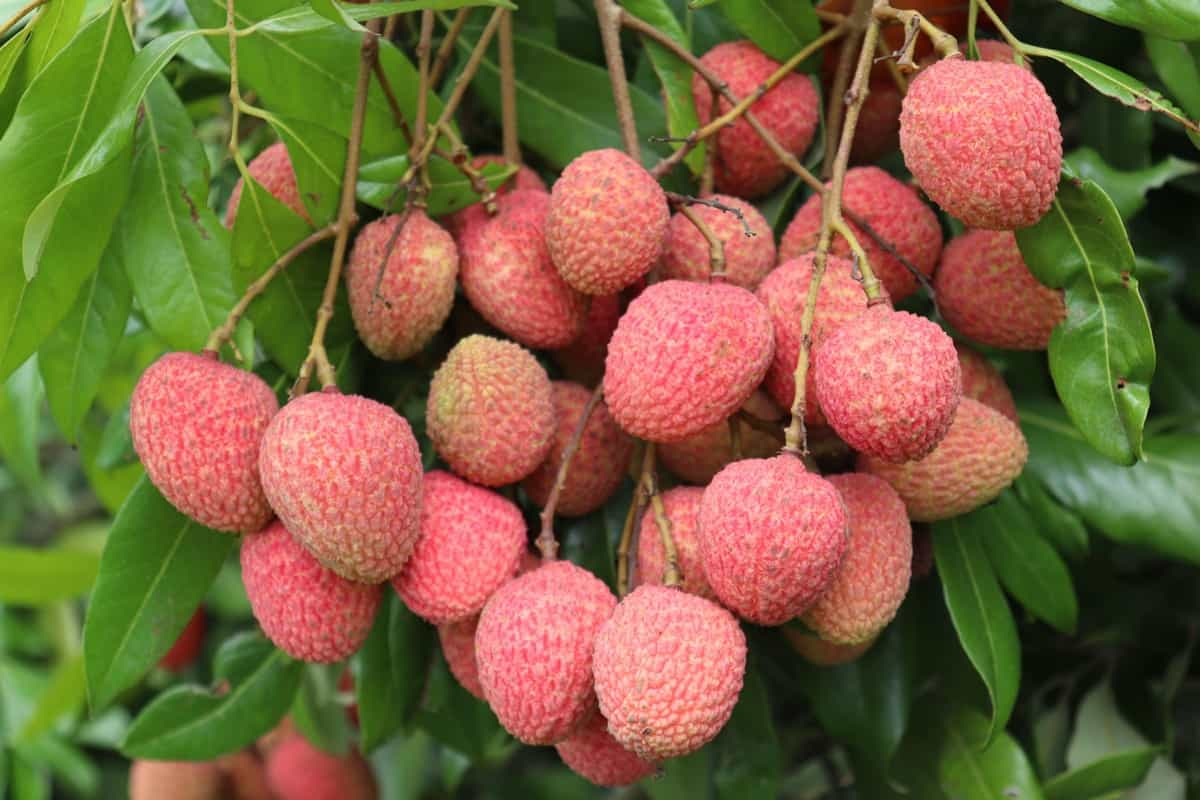
We’ll delve into the best practices, pest management strategies, and irrigation techniques for successful cultivation. Additionally, we’ll discuss the challenges, market trends, and equipment required for high-density litchi plantations.
What is High-Density Litchi Plantation?
High-Density Litchi Plantation is a modern technique for maximizing litchi production within limited space. It involves planting litchi trees at higher densities than traditional methods, increasing productivity per acre. The primary goal is to optimize land utilization and enhance yield and profitability.
By carefully selecting appropriate spacing and employing efficient management practices, farmers can grow more litchi trees per unit area, leading to higher fruit production. High-density plantation techniques include proper pruning, trellising, and canopy management to ensure adequate light penetration and airflow. This innovative approach has gained popularity due to its ability to maximize litchi production while utilizing limited land resources effectively. High-density planting (HDP) is essential for orchard productivity per unit area.
Maximizing plant density on limited land is crucial. Due to its productivity, HDP is growing in many crops and climates. HDP must balance vegetative development with fruiting. This method relies on monitoring shoot growth and adjusting light interception. HDP maximizes vertical and horizontal space to improve productivity, plant health, and fruit quality.
In case you missed it: Key Nutrient Management of Litchi: Optimizing Approaches for Enhanced Yield and Quality
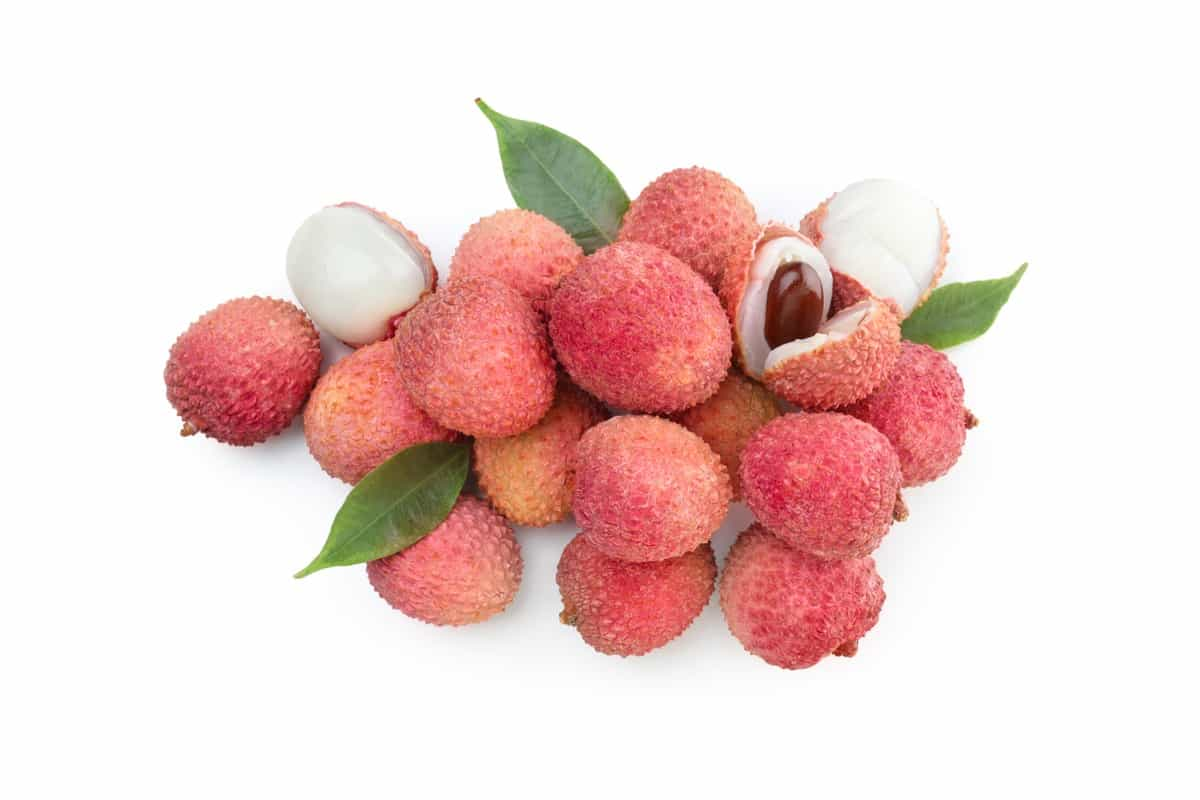
Benefits of High-Density Litchi Plantation
- Higher Production Efficiency: High-density planting increases production efficiency by maximizing yield per unit of production capacity. Factors like the area and volume of the tree canopy significantly impact production potential, making it possible to measure output performance based on ground area, canopy area, canopy volume, or canopy bearing volume.
- Precocity: High-density litchi plantation induces precocity, allowing trees to develop and produce a high fruit yield before crowding. Techniques such as rootstock selection, pruning, and growth regulators can promote early fruiting.
- Early Returns on Investment: Although the initial investment per unit area is higher in high-density plantations, the smaller size of the plants, combined with precocity and prolificity, enables quicker returns on investment.
- Better Land Utilization: High-density plantation optimizes land utilization, especially in the early fruiting stages, leading to higher yields per unit area.
- Easy Management: Smaller trees in high-density plantations are easier to handle and require less expensive management practices. Orchard machinery can be efficiently utilized, reducing operational costs.
- Production Versatility: High-density plantation offers flexibility, allowing for planting dwarf trees that reach maturity and fruit production in a shorter time frame. However, achieving this versatility in litchi cultivation can be challenging.
- Reduction in Cost of Production: High-density plantation enables mechanization and more effective use of agricultural inputs, reducing fruit crop production costs.
Increasing Yield in High-Density Litchi Plantation
Litchi, a delicious fruit with vibrant red skin, is native to various regions worldwide. Litchi chinensis Sonn., belonging to the Sapindaceae family, is a subtropical fruit that requires specific climatic conditions for commercial cultivation. India is the second-largest litchi producer globally, with increased production over the past few years. In 2018-2019, India produced 7.27 lakh MT of Litchi on 0.95 lakh hectares, with a 6.3 MT/ha productivity. Additionally, India exported 125.37 MT of Litchi, generating significant revenue.
Bihar, in particular, has been a leading producer of Litchi in India. Litchi cultivation offers environmental benefits as a perennial evergreen crop, contributing to reducing global warming and pollution. By adopting high-density planting methods, such as multi-story cropping models, density planting, and meadow orcharding, productivity can be increased, addressing the growing demand for fruits amidst land limitations and resource scarcity.
High-Density Litchi Plantation Techniques
High-density litchi plantation techniques require careful attention to site selection, site planning, and irrigation. The productivity of Litchi, considering its propagation through air layering and the limited commercial use of rootstock and standardized grafting techniques. Planting geometry, nutrient management, and canopy management are crucial for high-density litchi planting. While high-density planting has been proven effective in increasing productivity in Litchi across various locations, it demands more attention than other fruit crops, particularly in Indian conditions.
High-Density Litchi Plantation Varieties
- Calcuttia: A popular variety is known for its high yield potential, large-sized fruit, and excellent taste. It is suitable for both domestic and export markets.
- China-3: This variety is known for its large fruit size, attractive red color, and sweet flavor. It is a late-maturing variety and has good market demand.
- Rose scented: This variety is favored for its distinct rose fragrance and juicy, sweet fruit. It has a medium fruit size and is suitable for fresh consumption and processing.
- Bedana: Known for its small to medium-sized fruit with excellent flavor. It is an early-maturing variety and is preferred for its high productivity.
- Purbi: This variety is recognized for its early maturity, small to medium-sized fruit, and good taste. It is suitable for regions with cooler climates.
In case you missed it: A Step-By-Step Guide to High Density Fruit Farming: For Guava, Banana, Mango, Pineapple, Lemon, Papaya, Litchi, and Apple
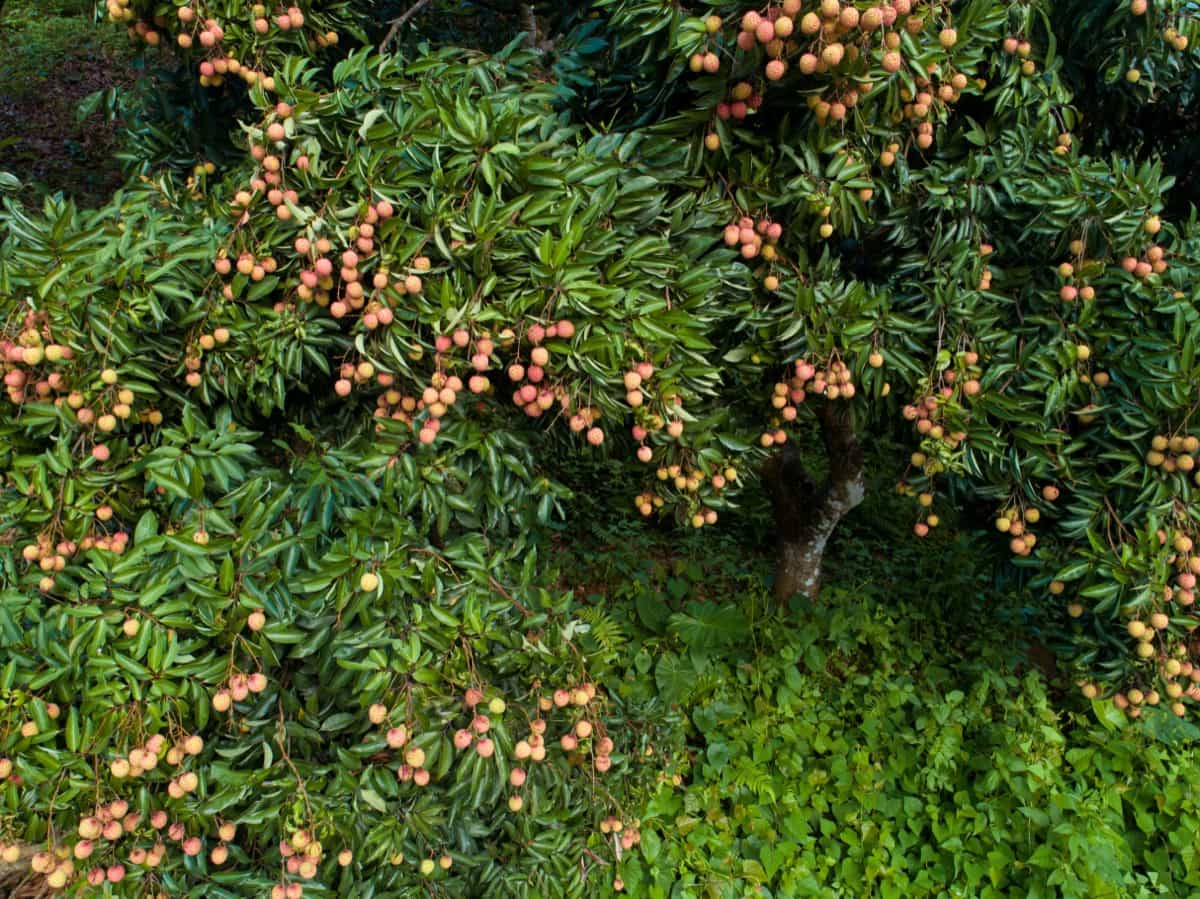
High-Density Litchi Plantation Spacing
Determining space in high-density litchi plantations involves considering tree size, plant density, climate, and soil conditions. Mechanical pruning techniques can be used to maintain smaller stature plots with open spaces between trees, resulting in high yields. Feasibility studies suggest a density of 3x5m or 156 plants/ha at 8x8m spacing for the Bombai cultivar. Recommendations for litchi and macadamia orchards range from 10x10m to 15x15m, but 5x5m to 7x7m spacing in South Africa is recommended.
The optimum plant density for the Bombai cultivar was 156 plants/ha with a yield of 7 tons/ha at a spacing of 8x8m. Pruning between September and December can control tree height without affecting flowering. Permanent orchards typically have 40 feet spacing, while 30 feet is sufficient in India’s drier climate. Adequate light exposure on both sides of the litchi tree is crucial for optimal productivity.
High-Density Litchi Plantation Plants Per Acre
Increasing demand for litchi fruits while dealing with limited land and resources, high-density planting (HDP) is an effective technique. HDP allows for the highest number of plants per unit area, increasing fruit production in a smaller space and time. Optimal HDP ranges from 1500 to 15,000 plants per hectare, while ultra-high-density planting can reach 10,000 to 20,000. Meadow orcharding even exceeds 20,000 plants per hectare. Plant population and density vary based on plant condition, precocity, bearing prolificacy, and management practices.
Optimal Fertilization for High-Density Litchi Plantation
In high-density litchi plantations, drip irrigation and fertigation systems are crucial for efficient water and nutrient utilization due to increased root mass per unit of ground space. A nutrient application program should be developed based on soil and leaf nutrient analysis. Plant growth regulators like Paclobutrazol, Alar, Uniconazole, and prohexadione-calcium can be used to control vegetative growth.
Uniconazole has shown better effectiveness than paclobutrazol in limiting shoot growth in avocados. Plant bioregulators such as daminozide (Alar), chlormequat (Cycocel), paclobutrazol (Cultar), ethrel (Ethephon), TIBA, and MH play a significant role in regulating tree size and promoting early fruiting in Litchi and other fruit crops.
Sustainable and Best Practices for High-Density Litchi Plantation
Planting Density: Increasing tree density improves light interception and photosynthesis, resulting in higher potential yield per hectare. Optimum tree density ensures optimal light distribution and interception. Depending on the planting system, Litchi’s tree density can range from 400 to 700 plants per hectare.
In case you missed it: Top 15 Steps to Boost Litchi/Lychee Yield: How to Increase Fruit Size, Quality, and Production
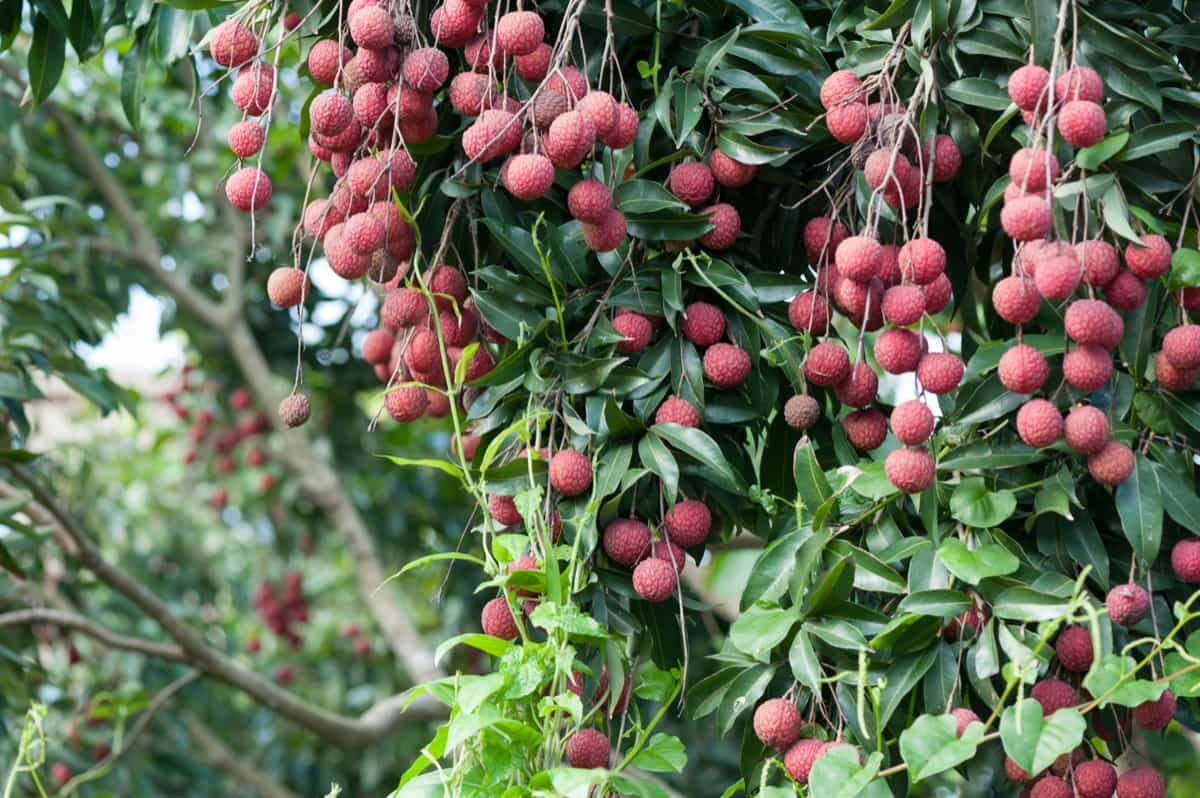
Planting Geometry: The arrangement of trees and plant form plays a crucial role in light distribution. Sufficient alleyways for farm machinery movement should be incorporated into the planting system. Single hedge row, double hedge row, or square systems 4-5 meters apart, allowing ample alley space, are commonly practiced in high-density litchi planting.
Pruning System: Proper training and pruning are essential for growth control and maintaining a desirable tree form. Training begins upon planting, and subsequent pruning helps shape the tree. Shoots from primary, secondary, and tertiary branches are pruned after fruit harvest. Regular pruning is necessary to manage canopy size and light distribution, especially for mechanization purposes.
Mechanization: Automation is crucial in high-density Litchi planting for increased production efficiency. Irrigation and fertigation can be automated, ensuring adequate water supply and nutrient management. Mechanized pruning can also be implemented to streamline farm operations.
Fertilization: Full doses of phosphorus (P) and potassium (K) should be applied to the soil in July. Nitrogen (N) can be split into two equal doses, one given in March after the fruit set and the other after crop harvest in July. For fertigation, a standard schedule should be followed during vegetative and reproductive growth and fruit development.
Irrigation: High-density litchi orchards should be irrigated as needed, especially after paclobutrazol application in September-October and from panicle emergence to crop harvest at 15-20 day intervals. No irrigation is applied from the first rainfall in June to the end of February.
Tillage and Weed Control: In October-November, Tillage operations should be performed to control weeds and mix fertilizers and leaf litter into the orchard soil. Weeds can be a problem initially and should be removed, with mulching as a potential solution.
Pest and Disease Management: Pest and disease problems in high-density litchi orchards are generally similar to those in normal planting, sometimes even more severe. Following recommended practices and using appropriate chemicals to control pests and diseases is important.
Harvesting: High-density litchi orchards start bearing fruit after 4-5 years, and their higher number of tertiary branches per unit area makes them economically viable earlier than normal planting. These orchards’ improved light interception and distribution result in better fruit quality. Adopting a complete package of practices for high-density planting can achieve an estimated 14-16 tons per hectare yield, leading to increased profitability and a competitive advantage for local litchi growers.
Yield: Extreme pruning at 2 m is best for high-density planting. High-density planting (6m x 4m) yielded less after 12–13 years. Extreme trimming in June following litchi harvesting is necessary to maximize productivity and quality in high-density orchards. Standardizing HDP in fruit crops has had mixed results, but farmers have yet to apply it commercially.
In case you missed it: Successful Pig Farm Management and Operational Strategies: A Complete Guide
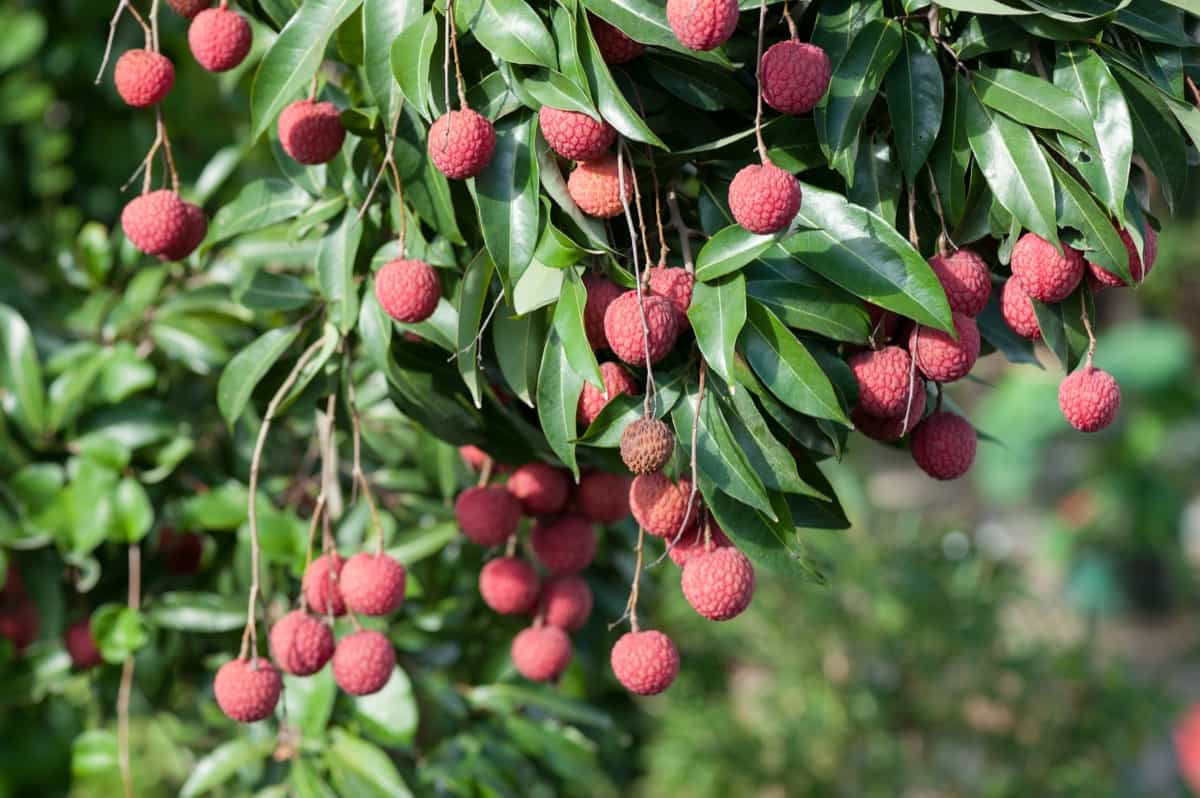
Managing Pests in High-Density Litchi Plantation
Lychee cultivation faces several pests that threaten tree health, fruit quality, and yield. The lychee mite is a major pest, causing leaf infestation with symptoms like yellowing, velvety growth, and gall formations. Pruning affected branches and employing karathene spray effectively control measures, while neem cake application reduces occurrence.
The shoot borer attacks new shoots, leading to twig drying, but an infestation can be minimized through pruning and burning affected twigs. Bark-eating caterpillars and trunk borers weaken the stem, necessitating the cleaning of infested areas and plugging holes. Fruit borer affects ripening fruits, rendering them inedible, with humid conditions and rain aiding infestation. Additionally, lychee is susceptible to leaf-eating caterpillars, leaf miners, bugs, and aphids and damage from birds, bats, and squirrels.
High-Density Litchi Plantation Disease Control
Effective disease control in high-density lychee crops reduces insect pests and disease losses. Unlike other fruit-bearing plants, lychee plants are disease-resistant. Some leaf spot diseases are caused by fungal pathogens, not bacteria or viruses. Powdery mildew (Oidium spp.), anthracnose or leaf spot (Botryodiplodia theobormae Pat, Colletotrichum gloeosporioides Penz), and red rust (Cephalexros mycoides) can affect lychee crops, but severity varies by season and location. For red rust, sulfur washes in September-October and February-March normally work, while fungicides are usually used 1-2 times.
High-Density Litchi Plantation Cost Analysis (1 Acre Basis)
The major components of the model include land development, fencing, irrigation infrastructure, drip irrigation, equipment/implements, building and storage, and cultivation costs.
Costs
| Component | |
| Land development | 15.00 |
| Fencing | 12.60 |
| Irrigation infrastructure | 30.00 |
| Drip irrigation and fertigation system | 20.00 |
| Equipment/implements | 20.00 |
| Building and storage | 26.80 |
| Cultivation costs | 120.60 |
| Labor cost | Estimated at 270/man-day |
Returns
| Component | Value |
| Projected yield | Increasing from 2.0 tonnes in 8 to 12.0 tonnes in year 9, leveling off thereafter |
| Estimated value of produce | Rs.15,000 per tonne |
In case you missed it: An Approach to Moisture Stress Management in Vegetable Crops: Thriving Against the Drought
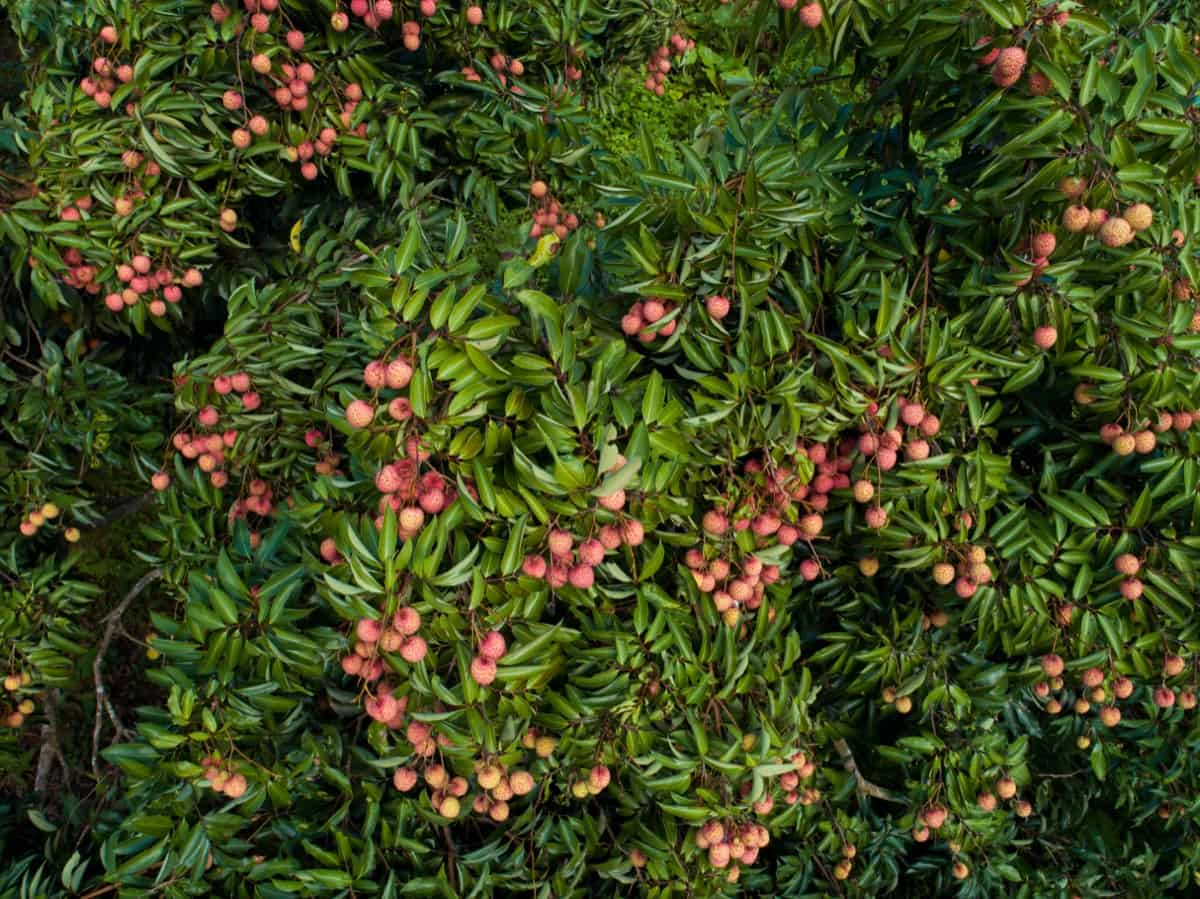
Financing
| Component | Amount (in Rs. Thousand) |
| Farmer’s share | 250.00 |
| Capital subsidy | Amounting to a certain portion of the total project cost |
Project Viability
| Component | Value |
| Internal rate of return (IRR) | 28.85 |
| Benefit-cost ratio (BCR) | 2.2 |
| Debt service coverage ratio (DSCR) | Average of 3.51 |
| Payback period | Estimated at 6.12 years |
| Break-even point | Expected to be reached in the 3rd year, with fixed costs comprising 61.3% of gross sales |
Please note that the values presented are approximate and can vary based on specific factors and conditions.
Conclusion
High-density litchi plantation, with proper spacing and a higher number of plants per acre, is profitable. Despite the initial investment cost, it offers higher yields, making it a viable option for litchi cultivation.
- How to Build a Low-budget Goat Shed: Cheap Ideas and Tips
- Goat Farming Training Programs in India: A Beginner’s Guide
- Types of Pesticides Used in Agriculture: A Beginner’s Guide
- Economical Aquaculture: A Guide to Low-Budget Fish Farming
- 15 Common Planting Errors That Can Doom Your Fruit Trees
- How to Make Houseplants Bushy: Effective Tips and Ideas
- Innovative Strategies for Boosting Coconut Pollination and Yield
- Pollination Strategies for Maximum Pumpkin Yield
- The Complete Guide to Chicken Fattening: Strategies for Maximum Growth
- Natural Solutions for Tulip Problems: 100% Effective Remedies for Leaf and Bulb-Related Issues
- Revolutionizing Citrus Preservation: Towards a Healthier, Greener Future
- Natural Solutions for Peony Leaf and Flower Problems: 100% Effective Remedies
- Maximizing Profits with Avocado Contract Farming in India: A Comprehensive Guide
- Natural Solutions for Hydrangea Problems: 100% Effective Remedies for Leaf and Flowers
- The Ultimate Guide to Choosing the Perfect Foliage Friend: Bringing Life Indoors
- From Sunlight to Sustainability: 15 Ways to Use Solar Technology in Agriculture
- The Ultimate Guide to Dong Tao Chicken: Exploring from History to Raising
- The Eco-Friendly Makeover: How to Convert Your Unused Swimming Pool into a Fish Pond
- Mastering the Art of Delaware Chicken Farming: Essentials for Healthy Backyard Flocks
- 20 Best Homemade Fertilizers for Money Plant: DIY Recipes and Application Methods
- How to Craft a Comprehensive Free-Range Chicken Farming Business Plan
- Brighten Your Flock: Raising Easter Egger Chickens for Beauty and Bounty
- How to Optimize Your Poultry Egg Farm Business Plan with These Strategies
- Subsidy for Spirulina Cultivation: How Indian Government Schemes Encouraging Spirulina Farmers
- Ultimate Guide to Raising Dominique Chickens: Breeding, Feeding, Egg-Production, and Care
- Mastering the Art of Raising Jersey Giant Chickens: Care, Feeding, and More
- Ultimate Guide to Raising Legbar Chickens: Breeding, Farming Practices, Diet, Egg-Production
- How to Raise Welsummer Chickens: A Comprehensive Guide for Beginners
- How to Protect Indoor Plants in Winter: A Comprehensive Guide
- Ultimate Guide to Grow Bag Gardening: Tips, Tricks, and Planting Ideas for Urban Gardeners
- Guide to Lotus Cultivation: How to Propagate, Plant, Grow, Care, Cost, and Profit
- Agriculture Drone Subsidy Scheme: Government Kisan Subsidy, License, and How to Apply Online
- Ultimate Guide to Raising Araucana Chickens: Breed Profile, Farming Economics, Diet, and Care
- Bringing Hydroponics to Classroom: Importance, Benefits of Learning for School Students
- Ultimate Guide to Raising Polish Chickens: Breed Profile, Farming Economics, Diet, and Care
- Ultimate Guide to Raising Australorp Chickens: Profile, Farming Economics, Egg Production, Diet, and Care